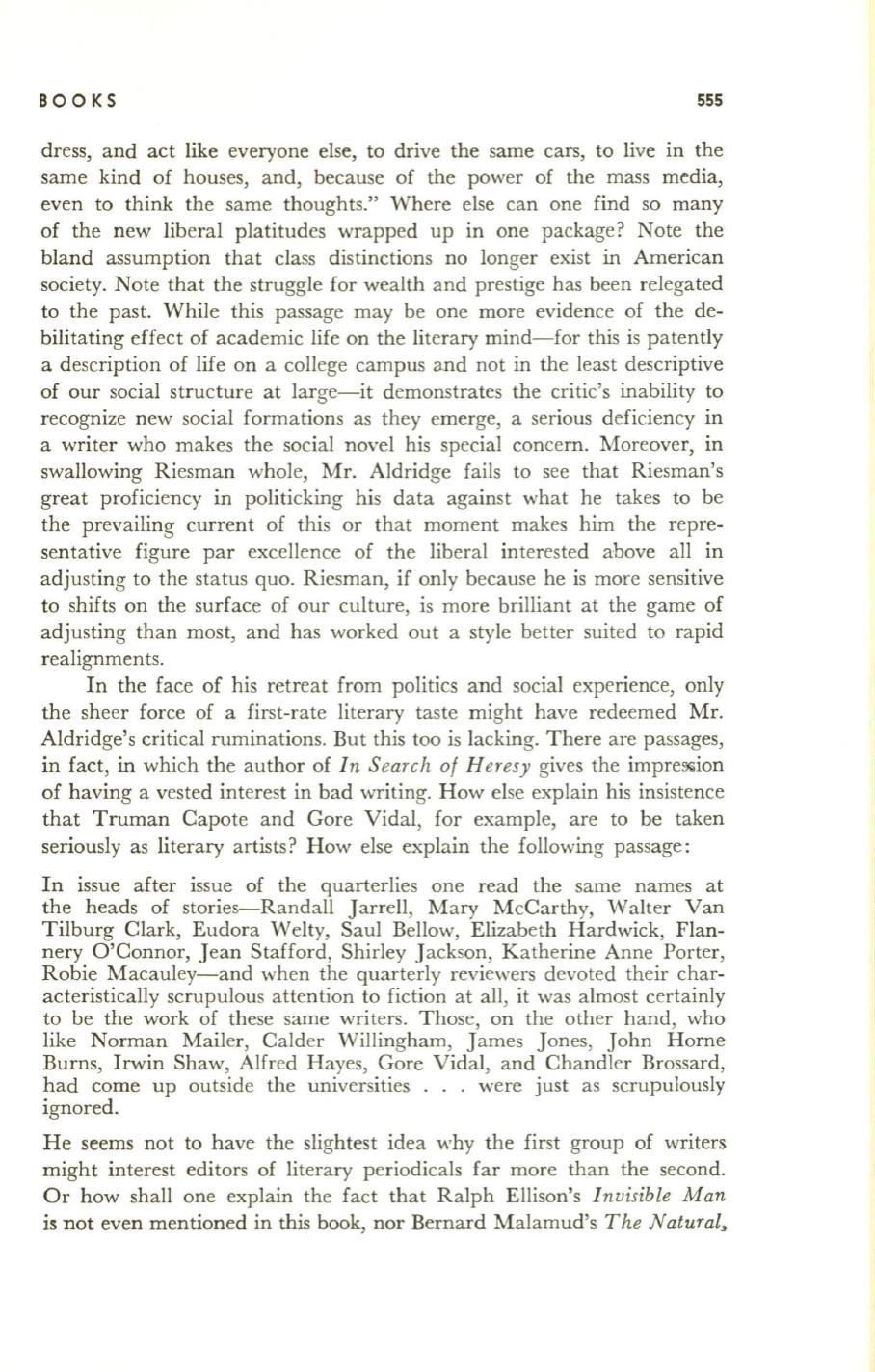
BOOKS
555
dress, and act like everyone else, to drive the same cars, to live in the
same kind of houses, and, because of the power of the mass media,
even to think the same thoughts." Where else can one find so many
of the new liberal platitudes wrapped up in one package? Note the
bland assumption that class distinctions no longer exist in American
society. Note that the struggle for wealth and prestige has been relegated
to the past. While this passage may be one more evidence of the de–
bilitating effect of academic life on the literary mind-for this is patently
a description of life on a college campus and not in the least descriptive
of our social structure at large-it demonstrates the critic's inability to
recognize new social formations as they emerge, a serious deficiency in
a writer who makes the social novel his special concern. Moreover, in
swallowing Riesman whole, Mr. Aldridge fails to see that Riesman's
great proficiency in politicking his data against what he takes to be
the prevailing current of this or that moment makes him the repre–
sentative figure par excellence of the liberal interested above all in
adjusting to the status quo. Riesman, if only because he is more sensitive
to shifts on the surface of our culture, is more brilliant at the game of
adjusting than most, and has worked out a style better suited to rapid
realignments.
In
the face of his retreat from politics and social experience, only
the sheer force of a first-rate literary taste might have redeemed Mr.
Aldridge's critical ruminations. But this too is lacking. There are passages,
in fact, in which the author of
In S earch of H eresy
gives the impre9liion
of having a vested interest in bad writing. How else explain his insistence
that Truman Capote and Gore Vidal, for example, are to be taken
seriously as literary artists? How else explain the following passage :
In
issue after issue of the quarterlies one read the same names at
the heads of stories-Randall Jarrell, Mary McCarthy, Walter Van
Tilburg Clark, Eudora Welty, Saul Bellow, Elizabeth Hardwick, Flan–
nery O'Connor, J ean Stafford, Shirley Jackson, Katherine Anne Porter,
Robie Macauley-and when the quarterly reviewers devoted their char–
acteristically scrupulous attention to fiction at all, it was almost certainly
to be the work of these same writers. Those, on the other hand, who
like Norman Mailer, Calder Willingham, J ames Jones, John Horne
Burns, Irwin Shaw, Alfred Hayes, Gore Vidal, and Chandler Brossard,
had come up outside the universities . . . were just as scrupulously
ignored.
He seems not to have the slightest idea why the first group of writers
might interest editors of literary periodicals far more than the second.
Or how shall one explain the fact that Ralph Ellison's
Invisible Man
is not even mentioned in this book, nor Bernard Malamud's
The Natural,


